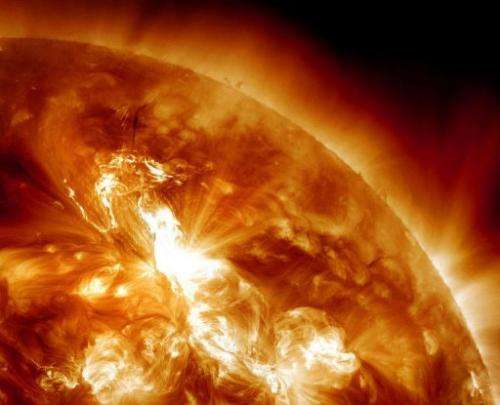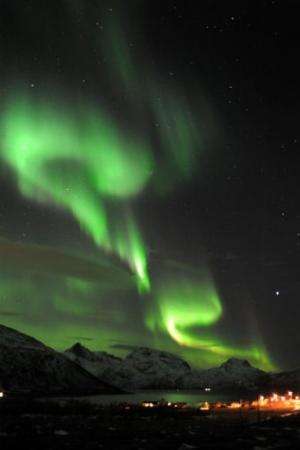Flights rerouted as massive solar storm slams Earth

Solar radiation from a massive sun storm -- the largest in nearly a decade -- collided with the Earth's atmosphere, prompting an airline to reroute flights and skywatchers to seek out spectacular light displays.
US carrier Delta Air Lines said it had adjusted flight routes for transpolar journeys between Asia and the United States to avoid problems caused by the radiation storm, a spokesman said.
NASA confirmed the coronal mass ejection (CME) began colliding with Earth's magnetic field around 10:00 AM (1500 GMT) Tuesday, adding that the storm was now being considered the largest since October 2003.
Radiation storms are not harmful to humans, on Earth at least, according to the US space agency. They can, however, affect satellite operations and short wave radio.
The storm's radiation, likely to continue bombarding Earth's atmosphere through Wednesday, and its possible disruption to satellite communications in the polar regions prompted the flight rerouting, airline officials said.

Atlanta-based Delta, the world's second largest airline, said "a handful" of routes had their journey adjusted "based on potential impact" of the solar storm on communications equipment, spokesman Anthony Black told AFP.
Routes from Hong Kong, Shanghai and Seoul took a more southerly route after the solar flare erupted on Sunday.
The airline said it would continue to monitor solar activity before return flights to their normal routes.
Due to the unusual intensity of the photons raining on Earth, the spectacular aurora borealis -- the stunning "Northern Lights" display -- which is often seen closer to the Arctic pole at this time of year, has been seen as far south as Scotland and northern England, and at lower latitudes in the United States.
The event started late Sunday with a moderate-sized solar flare that erupted right near the center of the Sun, said Doug Biesecker, a physicist with the National Oceanic and Atmospheric Administration Space Weather Prediction Center.
"The flare itself was nothing spectacular, but it sent off a very fast coronal mass ejection traveling four million miles per hour (6.4 million kilometers per hour)," he told AFP.
Space weather watchers said the best aurora sightings are normally around midnight local time.
Rob Stammes, who runs the Lofoten Polar Light Centre in Lofoten, Norway said the CME's arrival Tuesday had produced a surge in ground currents outside his laboratory.
"This could be a happy day for many aurora watchers," he told aurora tracker website spaceweather.com
(c) 2012 AFP





















